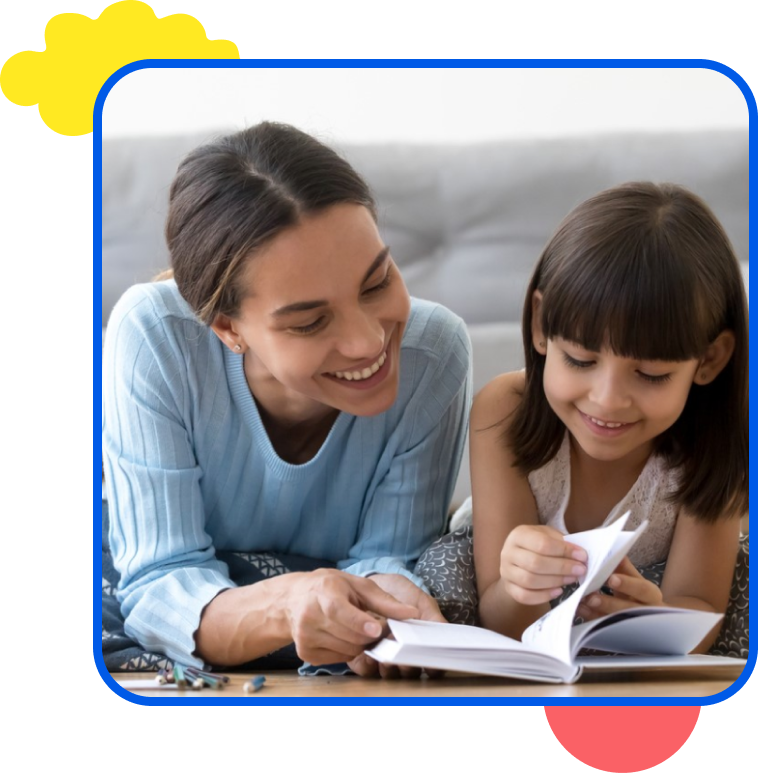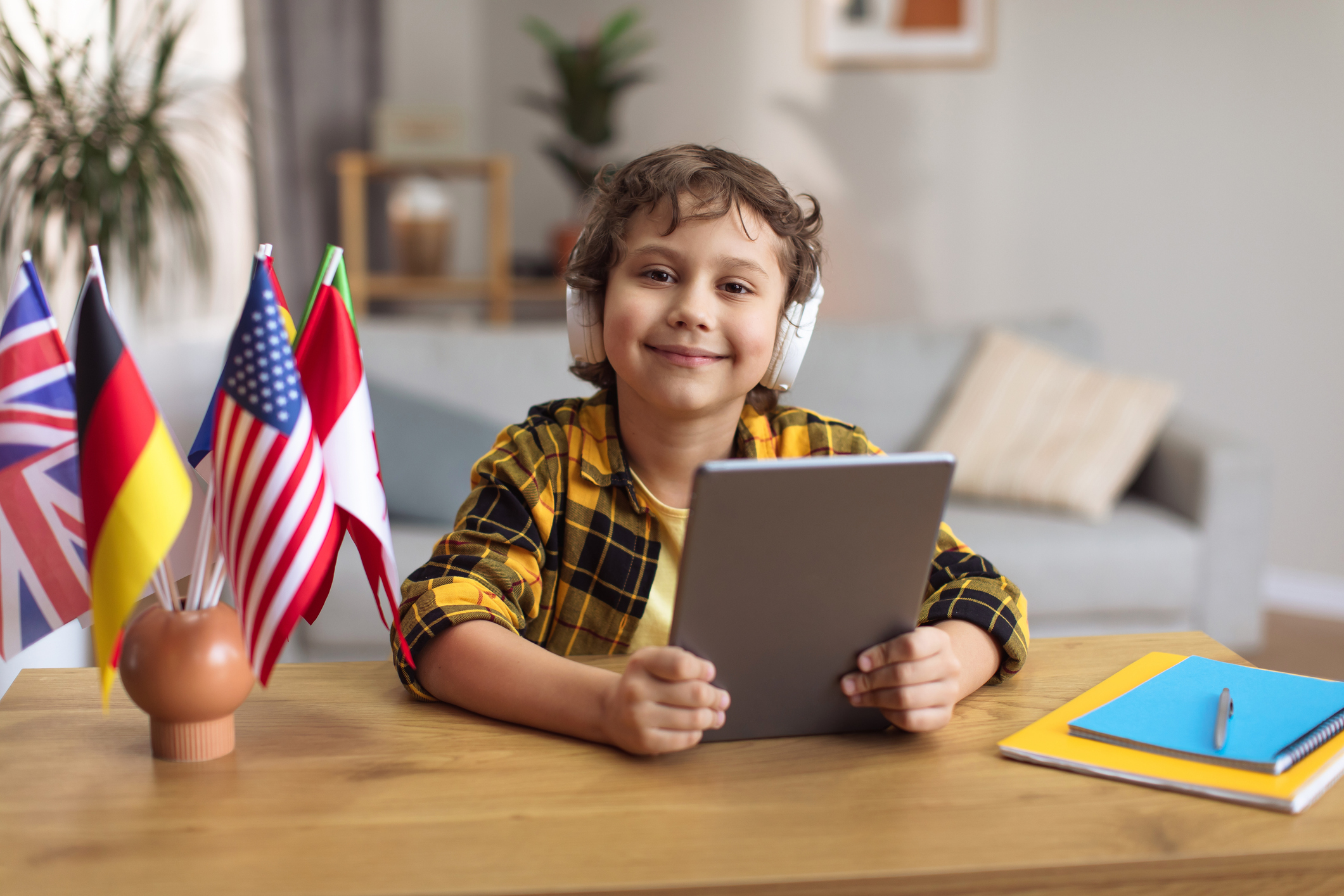Is Spanish Hard to Learn for Native English-Speaking Children?



Are you considering enrolling your child in Spanish classes? If so, you might wonder, “Is Spanish hard to learn?” and have concerns about their ability to tackle this new language.
In this blog post, we’ll address the difficulty of learning Spanish and provide practical tips and advice for parents considering signing up their child for Spanish classes.
When you finish reading, you’ll know whether learning Spanish is the right choice for your child. You’ll also have the necessary tools to support their Spanish learning journey, including a free trial of online language classes!
Let’s dive right in and explore the ins and outs of learning Spanish!
Is Spanish hard to learn?
It’s a common question many parents ask when considering Spanish classes for their children. While learning any new language can be challenging, Spanish is one of the easiest languages to learn for native English speakers.
Now, that doesn’t mean it’s easy enough to pick up without practice, but Spanish is a language that can be conquered with determination and the right approach.
Let’s look at some factors that may make Spanish seem difficult at first.
Spanish grammar
One aspect that can initially pose a challenge is Spanish grammar. For instance, Spanish nouns have genders. This means that words can be masculine or feminine, and adjectives must agree in gender with the nouns they modify.
Additionally, Spanish verb conjugations can be complex. Verbs must be conjugated differently depending on the subject pronoun and the tense. For example, the verb “hablar” (to speak) would be conjugated as follows:
- Yo hablo (I speak)
- Tú hablas (You speak, informal)
- Él/Ella/Usted habla (He/She/You speak, formal)
- Nosotros/Nosotras hablamos (We speak)
- Vosotros/Vosotras habláis (You all speak, informal)
- Ellos/Ellas/Ustedes hablan (They/You all speak)
Verb conjugation for other tenses, such as the subjunctive mood, introduces further complexity. However, with consistent effort, your child can become proficient in Spanish grammar.
Spanish pronunciation
The pronunciation rules in Spanish may also pose a challenge initially, especially for English speakers. For instance, Spanish has rolled “r” sounds, which may be unfamiliar to English speakers.
Spanish also has vowel sounds that differ slightly from English. The vowels “a,” “e,” “i,” “o,” and “u” in Spanish have consistent pronunciation, unlike in English, where vowel sounds can vary depending on the word.
Spanish spelling
Spanish spelling generally follows consistent rules, making it more predictable than English. However, there are still some challenges.
Spanish uses accents and diacritical marks that can alter the pronunciation and meaning of words. For example, “Está” (he/she is) and “esta” (this) also have distinct meanings, with the accent mark indicating the correct pronunciation and meaning.
Spanish also has some irregularities and exceptions to spelling rules. For example, the word “ir” (to go). This verb is irregular in its conjugation. Instead of following the regular pattern of “-ir” verbs, it conjugates as “voy” (I go), “vas” (you go), etc.
Spanish sentence structure
There can be some difficulties in learning Spanish sentence structure for English-speaking children. Spanish follows a subject-verb-object (SVO) word order, similar to English. However, there are instances where the Spanish word order differs from English. For example:
- Adjective placement: In Spanish, adjectives generally come after the noun they modify, whereas in English, they typically come before the noun. For instance, “the red car” in English becomes “el carro rojo” in Spanish.
- Pronoun placement: Spanish often places pronouns before the verb, while English tends to place them after. For example, “I love you” in English becomes “Te amo” in Spanish.
Despite these initial difficulties, learning Spanish is an enriching and valuable experience for children. The benefits of bilingualism and the ability to communicate with millions of Spanish speakers worldwide make it a worthwhile endeavor.
Factors that can make it easy for kids to learn Spanish
Fortunately, despite the difficulties of learning Spanish, it also stands out as a language that offers several advantages for young learners.
Pronunciation consistency
Unlike English, where pronunciation can vary widely, Spanish pronunciation follows more predictable patterns. Once children learn the basic sounds of the language, they can apply those rules to new words.
Here are a few examples:
- Vowel sounds: Spanish has five vowel sounds – “a,” “e,” “i,” “o,” and “u” – and each has a consistent pronunciation. For instance, the “a” in Spanish is always pronounced as “ah,” as in “casa” (house).
- Pronunciation of consonants: Unlike English, Spanish has more consistent rules for pronouncing consonants. For example, the letter “b” is pronounced as a soft “b” sound, similar to the English “b,” in words like “bebé” (baby).
Similarities between Spanish and English vocabulary
Another advantage for young language learners is the considerable overlap between Spanish and English vocabulary. Many English and Spanish words share similarities in terms of spelling or pronunciation. These cognates allow children to make connections and quickly expand their vocabulary.
For example, words like “doctor,” “animal,” “chocolate,” and “fantástico” are nearly identical in both languages. This shared vocabulary provides a solid foundation for children to build upon as they progress in their Spanish language learning journey.
Resource: Easy Spanish words for kids
Exposure to Spanish-speaking cultures at home and abroad
Spanish is not only the official language in 21 countries worldwide but also has a significant presence within the United States. The Spanish-speaking community in the US provides children with additional opportunities for cultural exposure and language immersion.
In many cities and regions across the country, vibrant Spanish-speaking communities celebrate their language and culture. Children living in or near these communities have the advantage of first-hand exposure to Spanish through daily interactions, local events, and cultural festivals.
The influence of the Spanish-speaking community is evident in various aspects of American society, including music, movies, and cuisine. For example, animated movies like Coco, which celebrate Latin American culture, offer a delightful introduction to the captivating world of Spanish-speaking cultures.
Engaging with authentic Spanish and Latin American cuisine, such as tacos, paella, or empanadas, also allows children to savor the flavors and experience the culinary delights of Spanish-speaking cultures.
This cultural exposure within the US, alongside the global reach of Spanish-speaking countries, serves as a powerful motivator for children to explore and learn to speak Spanish.
Abundance of resources for kids to learn Spanish
Spanish is one of the most widely studied languages globally, resulting in a wealth of learning resources specifically designed for children. From books and online Spanish classes for kids to interactive apps and games, numerous engaging resources are available to support children’s Spanish learning journey.
Here are some of our favorite resources for kids to learn Spanish:
- 9 Fun Ways to Immerse Your Kids in Spanish at Home
- The Best Spanish Children’s Books
- 7 of the Best Spanish Movies for Kids [+Where to Watch Online]
Benefits of learning Spanish for children
Learning Spanish can bring numerous benefits to children, enhancing their personal growth and opening doors to exciting opportunities.
Here are some compelling reasons why learning Spanish is an excellent choice for kids.
Enhanced cognitive development
Learning a second language at a young age has been shown to have significant cognitive advantages. Research on bilingualism demonstrates that bilingual people exhibit improved memory, problem-solving abilities, and multitasking skills.
Additionally, speaking two languages has been linked to better academic performance in other subjects, fostering well-rounded intellectual development.
Expanded career opportunities
In our increasingly global world, being bilingual is a tremendous asset in the job market. Bilingual individuals are highly sought after, often enjoying increased job prospects and potentially higher salaries.
As one of the most widely spoken languages, fluency in Spanish can open doors to exciting career paths in fields such as international business, tourism, and diplomacy.
Cultural immersion and global awareness
Learning Spanish enables children to immerse themselves in the vibrant cultures of Spanish-speaking countries. Through language acquisition, they gain deeper insights into these cultures’ rich heritage, literature, music, and art.
Understanding different customs and traditions fosters empathy, respect, and a global mindset. It also broadens children’s perspectives and enables them to connect with people from diverse backgrounds.
Tips for parents who want their kids to learn Spanish
If you’re a parent interested in helping your child learn Spanish, here are some valuable tips to support their language learning journey.
Start early
Young children have a remarkable capacity to absorb languages effortlessly. You can help them take advantage of this “critical period” by incorporating Spanish into their daily routines by using simple phrases, singing songs, or reading Spanish storybooks. The earlier you expose them to the language, the more natural and fluent their acquisition will be.
Resource: 9 Reasons to Learn Spanish as a Child
Embrace immersion
Create an immersive environment by surrounding your child with Spanish-language resources. Encourage them to watch Spanish shows for kids, listen to Spanish music, and engage in interactive activities that promote language practice.
Also, consider enrolling them in Spanish language classes for kids, where they can learn alongside peers in an immersive and supportive setting.
Make it fun
Learning Spanish can be an enjoyable and exciting experience for your child. You can incorporate activities and games that make language learning interactive and engaging. We also recommend using flashcards, puzzles, or language learning apps specifically designed for children.
You can also organize cultural events or playdates with other Spanish-speaking families to create a fun and stimulating environment.
Learn Spanish alongside your child
Why not demonstrate your own enthusiasm for learning Spanish by becoming a language role model? Learn alongside your child, practice speaking Spanish with them, and show interest in their language progress. When children see their parents actively engaged in language learning, it reinforces the importance and value of acquiring new skills.
Resource: Tips on learning Spanish as a family
Provide cultural experiences
Beyond language learning, expose your child to the rich cultures of Spanish-speaking countries. Attend cultural festivals, visit museums with Spanish art exhibits, or explore international cuisine together. By encouraging your child to explore cultural customs, traditions, and histories, you can foster a deeper appreciation for Spain and Latin America.
Support continuous learning
Encourage consistent and ongoing language practice to give your child the best opportunity to master Spanish. Set aside regular time for Spanish activities, such as designated study sessions or language games. Also, make sure to celebrate milestones and achievements to reinforce the importance of perseverance and dedication.
Final thoughts
Is Spanish hard to learn? In some ways, yes. But it’s definitely possible for your child to learn to speak Spanish with consistent practice and guidance!
At Bilingual Bebe, children thrive in our online Spanish classes, finding enjoyment in the learning process while feeling encouraged and motivated.
Consider signing up your child for one of our classes to give them the best chance at becoming proficient Spanish speakers and enjoying the long-term benefits of bilingualism. You can even get the first lesson for free!


Simple Ways to Learn a Second Language at Home
Get resources and tips to help supplement your bilingual education journey at home.
By providing your email you are signing up to receive emails from Bilingual Bebe. Privacy Policy







